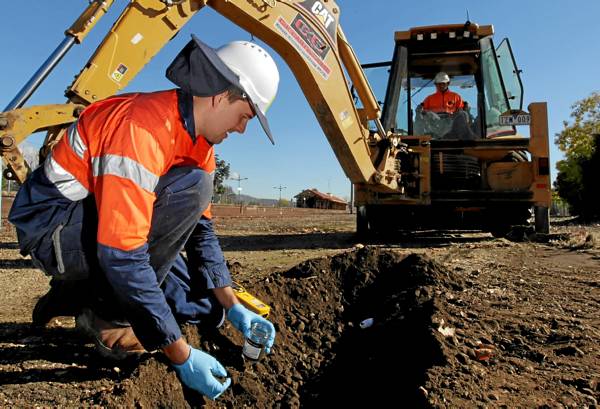Creating effective Remediation Action Plans (RAPs) for contaminated sites is essential for environmental restoration. Transform contaminated lands into thriving ecosystems with our cutting-edge Remediation Action Plans! This approach not only outlines a clear path to mitigate environmental hazards but also prioritizes the health and safety of communities and the sustainability of ecosystems. This blog post dives into the complexities of developing comprehensive RAPs, highlighting the newest methodologies, regulatory frameworks, and innovative technologies that are revolutionizing site remediation. Ideal for environmental professionals, land development stakeholders, or anyone passionate about ecological conservation, gaining insights into the principles and practices of effective remediation is crucial for fostering a healthier planet.
Understanding the Nature and Extent of Contamination
When tackling contaminated sites, it’s crucial to thoroughly understand the nature and extent of contamination. This process, known as site characterization, involves detailed contaminant identification and profiling.
- Site Characterization: Site characterization is the foundation of understanding contamination. It involves detailed investigations, including soil sampling, groundwater testing, and air quality assessments. At iEnvironmental Australia, we focus on comprehensive site assessments to map the extent of contamination accurately.
- Contaminant Identification and Profiling: Identifying and profiling contaminants are crucial steps. This involves analyzing the types of contaminants present, their concentrations, and potential risks. Our team utilizes advanced techniques for precise contaminant identification, ensuring that no harmful element goes unnoticed.
- Environmental Fate and Transport Modeling: Understanding how contaminants move through the environment is essential. Our environmental fate and transport modeling provides insight into how contamination spreads over time, affecting soil, water, and air. This modeling is crucial for planning effective remediation strategies.
- Risk Assessment: Risk assessment evaluates the potential impact of contaminants on human health and the environment. We employ rigorous methodologies to quantify risks, ensuring that all remediation efforts are targeted towards minimizing these risks.
- Regulatory Standards Compliance: Compliance with regulatory standards is non-negotiable. We stay abreast of the latest environmental regulations and ensure that all remediation plans meet or exceed these standards, ensuring legal compliance and safety for all stakeholders.
- Beneficial Use Considerations: We recognize that post-remediation land use is a key consideration. Our plans always consider the future beneficial use of the site, whether for residential, commercial, or ecological purposes, ensuring that remediation aligns with long-term land use goals.
- Land Use Planning: Incorporating land use planning into remediation strategies is crucial. Our team collaborates with urban planners and stakeholders to ensure that remediation efforts are in sync with broader land use objectives and community needs.
At iEnvironmental Australia, we prioritize comprehensive environmental fate and transport modeling to accurately determine the spread and impact of contaminants.
Establishing Cleanup Goals and Objectives
Setting clear remediation objectives is key to a successful cleanup. These objectives are often guided by regulatory standards and consider beneficial use considerations, such as future land use planning.
-
Defining Specific Remediation Objectives
Setting specific, measurable, and achievable remediation objectives is vital. These goals are tailored to each project, considering the extent of contamination and the desired end state of the site.
-
Aligning with Environmental and Health Standards
Our objectives are always aligned with strict environmental and health standards, ensuring that the remediation process contributes positively to the ecosystem and public health.
-
Addressing Community and Stakeholder Expectations
Understanding and integrating community and stakeholder expectations into our cleanup goals is a priority. We engage in active dialogue to ensure our objectives resonate with those affected by the contamination.
Our approach at iEnvironmental Australia ensures that these goals align with both environmental and client needs.
Evaluating and Selecting Remedial Technologies
Choosing the right remedial technology is critical. This decision is based on technology effectiveness and public acceptance.
-
Technology Screening and Selection
We conduct a thorough screening of available technologies, evaluating their suitability for specific contaminants and site conditions. This rigorous process ensures the selection of the most effective and efficient technology for each project.
-
Innovative and Traditional Remediation Methods
Our approach blends innovative and traditional remediation methods. We stay at the forefront of technological advancements, incorporating new techniques that offer improved efficiency and effectiveness.
-
Cost-Effectiveness and Sustainability
Cost-effectiveness and sustainability are key considerations in technology selection. We strive to choose solutions that are not only effective but also economically viable and environmentally sustainable in the long term.
-
Public Acceptance and Community Involvement
Ensuring public acceptance and involving the community in the technology selection process is crucial. We maintain transparency and open communication to build trust and consensus around chosen remediation methods.
Our team expertly navigates through various options, including cutting-edge and traditional methods, to find the most suitable solution for each unique site.
Implementing Remediation Actions Safely and Effectively
Safety is paramount in remediation projects. We adhere to strict health and safety protocols while ensuring that remedial design and construction management are carried out effectively. This stage is where our meticulous planning turns into tangible action on the ground.
- Remedial Design: Remedial design is the blueprint of our action plan. We develop detailed designs that specify the remediation methods, equipment needed, and timeline for implementation. These plans are meticulously crafted to ensure maximum effectiveness while minimizing environmental impact.
- Construction Management: Effective construction management is crucial for the successful implementation of remediation projects. Our team oversees every aspect of construction, ensuring that it adheres to the planned design, budget, and timeline, with minimal disruption to the surrounding environment and community.
- Health and Safety Protocols: Safety is our top priority. We implement strict health and safety protocols to protect our workers, clients, and the public. These protocols are in compliance with national and international safety standards, ensuring a risk-free work environment.
- Environmental Monitoring: Continuous environmental monitoring during remediation is vital. We monitor air, water, and soil quality to ensure that the remediation process does not adversely affect the surrounding environment.
- Performance Monitoring: Performance monitoring involves tracking the progress of remediation activities against the set objectives. This includes assessing the effectiveness of the remediation technologies in real-time, allowing for timely adjustments if needed.
- Data Evaluation: Data collected from environmental and performance monitoring is meticulously evaluated. This analysis is crucial for understanding the effectiveness of remediation actions and for making informed decisions throughout the project.
- Adaptive Management: Adaptive management is key to our approach. We continuously adjust our strategies based on monitoring data and performance evaluations, ensuring that our remediation actions remain effective and responsive to any emerging challenges.
Monitoring and Assessing Remediation Effectiveness
Post-implementation, environmental monitoring and performance monitoring are essential to assess the effectiveness of the remediation.
- Long-term Monitoring: Post-remediation, long-term monitoring is essential to ensure that the contaminants remain controlled and that the site remains safe for its intended use. This involves regular checks of soil, water, and air quality over an extended period.
- Institutional Controls: Implementing institutional controls helps in maintaining the integrity of the remediated site. These controls may include land use restrictions or ongoing management practices that ensure the site remains safe and free from future contamination.
- Groundwater Monitoring: Groundwater monitoring is a critical component, especially in areas where contamination has the potential to affect water sources. Our groundwater monitoring strategies are designed to detect any resurgence of contaminants promptly.
- Ecological Restoration: Where necessary, ecological restoration is part of our remediation effectiveness monitoring. This ensures that local ecosystems are restored and maintained, supporting biodiversity and environmental health.
- Public Outreach: Engaging with the public through outreach programs helps in maintaining transparency about the remediation process and its effectiveness. It also serves as a platform for addressing any community concerns post-remediation.
- Risk Communication: Effective risk communication is crucial in keeping all stakeholders informed about the potential risks and the measures taken to mitigate them. Our communication strategies are designed to be clear, transparent, and accessible.
- Stakeholder Involvement: Involving stakeholders in the monitoring process helps in building trust and ensuring that the remediation efforts are aligned with the expectations and needs of the community. This involvement includes regular updates and feedback sessions.
At iEnvironmental Australia, data evaluation plays a significant role in our adaptive management approach, ensuring continuous improvement and effectiveness.
Ensuring Long-Term Protection of Human Health and the Environment
Long-term monitoring and institutional controls are vital for ensuring sustained protection of human health and the environment. This includes:
- Long-Term Environmental Health Monitoring: Regular monitoring of air, water, and soil quality to ensure continued protection of the environment.
- Sustainable Land Management Practices: Implementation of practices that enhance soil health, water conservation, and ecological balance.
- Environmental Impact Assessments: Conducting assessments to evaluate the long-term effects of remediation and identify any unforeseen impacts.
- Community Health Surveillance Programs: Monitoring the health impacts of remediation projects on local populations.
- Ongoing Risk Management: Continuously assessing and managing any residual risks associated with the remediated site.
- Compliance with Environmental Regulations: Ensuring adherence to current and evolving environmental laws and regulations.
- Environmental Education and Awareness: Organizing workshops and sessions to educate communities about environmental protection and sustainable practices.
Community Engagement and Stakeholder Communication
Effective remediation isn’t just about the technical aspects; it’s also about people. We emphasize public outreach, risk communication, stakeholder involvement, and community participation. Our aim is to keep all parties informed and involved, creating a transparent and trust-building process.
-
- Regular Community Meetings: Hosting meetings to keep local residents informed and address their concerns.
- Transparent Reporting: Providing clear and accessible updates on project progress and outcomes.
- Stakeholder Collaboration: Working closely with local authorities, environmental groups, and residents to align projects with community needs.
- Social Media Engagement: Using social media platforms for broader engagement, information sharing, and feedback.
- Feedback Mechanisms: Implementing surveys, suggestion boxes, and online platforms for stakeholder feedback.
- Educational Outreach Programs: Conducting programs to raise awareness about environmental issues among schools and community groups.
- Crisis Communication Plan: Establishing protocols for effective communication during emergencies or unexpected events.
Our Commitment to Multifaceted Remediation and Community Involvement
Effective remediation action plans require a multifaceted approach, combining technical expertise with community involvement. At iEnvironmental Australia, we’re committed to delivering solutions that not only resolve immediate environmental issues but also pave the way for a sustainable future. We invite you to engage with us, share your thoughts, and explore how we can address your environmental challenges together.



